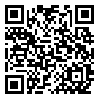BibTeX | RIS | EndNote | Medlars | ProCite | Reference Manager | RefWorks
Send citation to:
URL: http://jnfs.ssu.ac.ir/article-1-59-fa.html
Background: One of the most critical problems in the field of water and food pollution is the heavy metal pollution. Agricultural products are exposed to this type of contamination through wastewater; industrial activity and population pollutions are also in its area. Since the plant in the affected areas can directly enter heavy metals into the food chain, so, it is important to check their level of contamination. The purpose of this study was to monitor distribution of copper and nickel in the grape cultured in the farms around Marvast in Yazd province. Methods: All chemicals were of analytical grade. In order to determine the level of copper and nickel in grape extracts produced from the most important areas in grape production, 7 samples of grape were taken from these geographic regions. After grinding and homogenizing of samples, the concentration of nickel and copper, heavy metals were measured by atomic absorption spectrometer. The obtained results were analyzed through SPSS software based on statistical methods. Results: The mean value of copper and nickel were 26.4 ± 3.1 and 12.3 ± 1.5 μg/kg, respectively. According to the obtained results and their comparison with standards, different amounts of copper and nickel were observed in all samples, however, the highest amount of these metals was observed in one sample. Conclusions: Concentrations of heavy metals in samples from different regions were lower than the maximum allowable concentration of copper and nickel. Although, the amount of these metals in one sample, known as pollution indicator, suggested that this area can be exposed to both.
دریافت: 1395/8/22 | انتشار: 1395/11/13 | انتشار الکترونیک: 1395/11/13
| بازنشر اطلاعات | |
 |
این مقاله تحت شرایط Creative Commons Attribution-NonCommercial 4.0 International License قابل بازنشر است. |




